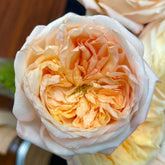How to Prune Climbing Roses for Faster Growth
Climbing roses are admired for their ability to transform garden spaces into romantic displays of vertical beauty. But to achieve that breathtaking effect of roses covering arches, trellises, or pergolas, pruning and training play a crucial role. Many gardeners wonder: how can I prune my climbing roses so they climb faster? Here’s a step-by-step guide based on practical experience.
1. Provide Proper Support Structures

Climbing roses are natural climbers, but they don’t attach themselves like vines. They need guidance and support. Before planting, decide where you want the rose to grow—whether it’s along a wall, across a trellis, or over an archway. If your plant is in an open space without support, build a frame or structure for the canes to attach to.
Growth is strongest during spring and autumn, so having the right support early on will encourage rapid vertical development.
2. Feed After the First Spring Bloom

Climbing roses often put on their heaviest flush of flowers in spring. To ensure they grow upward and produce repeat blooms, apply fertilizer immediately after the spring flowering season. This provides energy for the plant to push out new canes and prepare for another flush of blooms in autumn.
If growth seems delayed, possible reasons include root damage (such as from pests like voles) or winter dieback of older canes. Don’t worry—new shoots will often emerge, and with proper feeding and pruning, the plant can quickly recover and climb higher within the year.
3. Focus Energy on the Main Cane

If your goal is to make a climbing rose scale its support structure quickly, you’ll need to concentrate the plant’s energy. After the spring bloom:
-
Remove lateral branches – Cut off all side shoots to prevent energy from being wasted on unnecessary growth.
-
Rub off basal and stem buds – Eliminate unwanted bud points along the main stem.
-
Leave only one main cane with a strong terminal bud – This allows all the plant’s strength to be directed toward upward growth.
By doing this, the cane grows faster and reaches the top of the support sooner, ensuring your rose achieves its climbing effect much quicker.
Conclusion
Pruning climbing roses for faster growth requires more than just cutting back branches—it’s about directing energy. By giving your plant the right support structure, feeding after the first bloom, and focusing growth on a single main cane, you can encourage rapid vertical growth and achieve that spectacular climbing display in just a few seasons.
With a little patience and consistent care, your climbing rose will soon cover arches and trellises with abundant blooms, creating a truly enchanting garden scene.



























